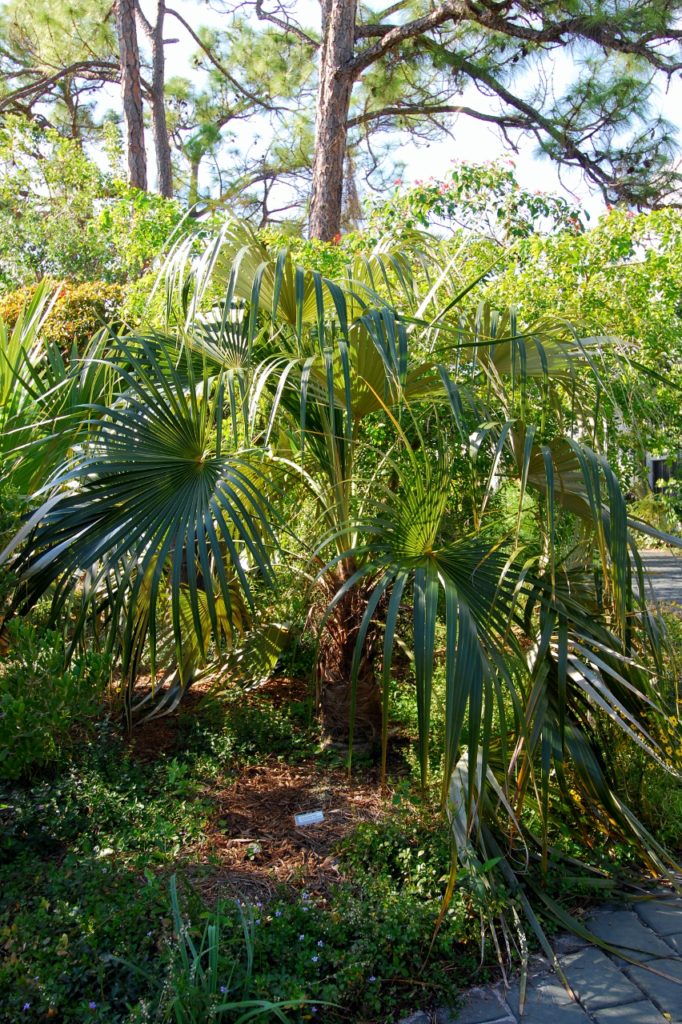
Silver Palm
Coccothrinax argentata
The Silver Palm above is in a landscape that receives once a week watering only during the dry season. It is regularly fertilized and has grown from a small 7 gal. size plant into this beautiful specimen in just four years.
This is the most beautiful palm in our state. The upper leaf surface is dark green and the lower is platinum. The sun will reflect off of the lower surface creating a magical shining effect.
Many Silver Palms are found in the lower Florida Keys, especially Big Pine Key. The Rocklands around homestead and near the Miami Zoo also have nice populations.
The tallest specimens are along the beach camping area of Bahia Honda State park. These are ten or more feet tall and when viewed from the water are truly magnificent.
This palm is very tolerant of salt air and short term saltwater flooding. It is found rarely along the coast up to Palm Beach County. Plant it back of the Sea Grapes in full sun to partial shade.
Although drought, poor soil and salt air are tolerated, to get your plant up to a decent size, fertilize and water regularly. No care will be needed once the plant is fully established and the size you want it to be.
The flowers attract bees and the pea size black fruit are usually cleaned off by squirrels and birds as soon as they ripen. This may be annoying if you are planning to germinate these seeds. The berries are not poisonous or tasty.
Silver Palm is great when mixed with other coastal or Keys plants in the front yard or used as a mass planting. On Big Pine Key, it mixes naturally with Key Thatch, Saw Palmetto, Slash Pine and numerous shrubs.
Try a front yard planting mixing Silver Palm, Key Thatch, Buccaneer Palm, Lignum Vitae, Rhacoma, Randia, Beach Creeper, Coontie, Dune Sunflower, Key Lily, Quailberry, a couple of Slash Pine and Black Torch.
You can place a few Silver Palms into the southern, or sunny portions of a coastal hammock planting. Any hammock species can be used.